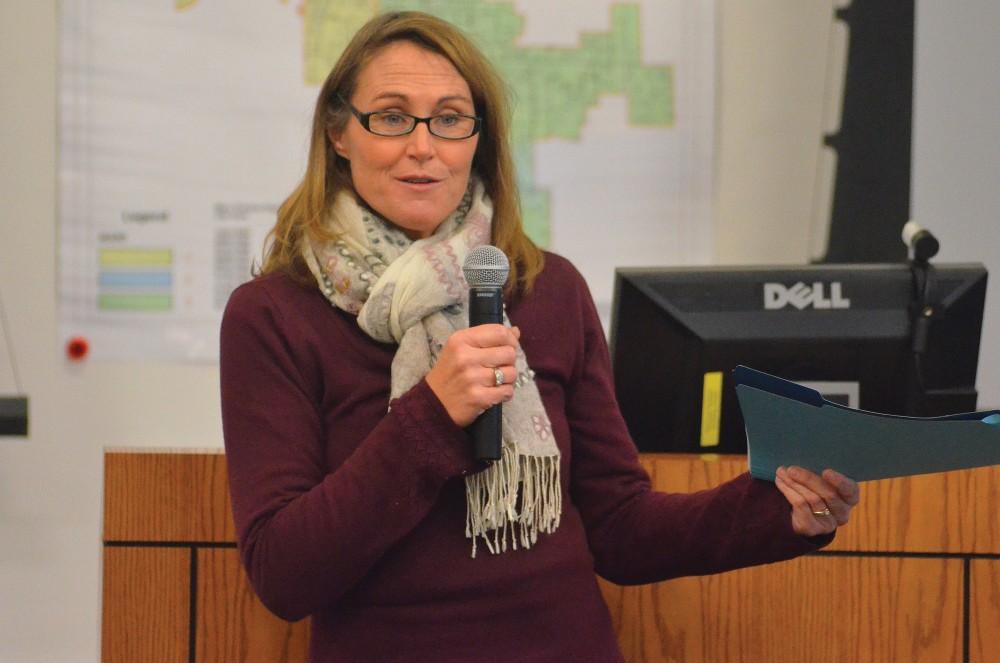‘The forgotten neighborhood’

GVL/ Nathan Kalinowski Nancy Haynes, Director of the Fair Housing Center of West Michigan discusses what they do in the Grand Rapids community.
Jan 13, 2014
Trash and needles litter the yards, and windows are boarded up on foreclosed homes located in a 44-block area of southeast Grand Rapids. To some it is known as “the forgotten neighborhood.”
Students at Grand Valley State University partnered with the Fair Housing Center of West Michigan to conduct an initial pilot study of the area of 2,000 residential units that was devastated by the foreclosure crisis.
“In 49507, it looked like a war zone,” said Nancy Haynes, director of the Fair Housing Center of West Michigan. “It was devastating.”
The study, Fair Housing 49507, is named after the neighborhood’s zip code. The 44-blocks are enclosed by Hall Street to the north and Burton Street on the south. Eastern and Division avenues mark the eastern and western boundary lines.
Several different aspects of the neighborhood are examined in the study, including the number and size of parks, grocery stores, foreclosures and crime, all of which have an effect on the value of houses nearby. Students from history, sociology, economics, public administration, and geography and planning presented their findings on Jan. 10 at the Mary Idema Pew Library.
Students in ECO 495: Senior Economic Project found that being 100 feet closer to a park added $193 to the value of a house. In addition, increases in the size of a park added value.
Other factors decreased housing values. An additional quarter mile of distance from a grocery store, such as Meijer, D&W or Save-A-Lot, would lower the value by $10,000 to $20,000. A house located on a block with a foreclosure rate above 3 percent has a decreased value by $2,700.
“Several years ago when the foreclosure crisis was at its worst and banks were overwhelmed with properties being foreclosed upon, the Fair Housing Center began to hear anecdotal things and see things driving through neighborhoods,” Haynes said. “Properties were not being maintained to the standards that they should be by the banks.”
Several foreclosed homes in the area are owned by Wells Fargo.
“In 49507, we didn’t find one ‘for sale’ sign on the foreclosed properties that Wells Fargo owned,” Haynes said. “In 49504, they still weren’t maintained to the standards of properties that were owned by owners, but there was not trash, the yards were being mowed, sidewalks were being shoveled and there were ‘for sale’ signs.”
Krzystzof Lower and several other students in SOC 351: Urban Sociology focused on a different segment of the neighborhood: the children. Lower worked with a group of 13 children to collect photographs of the area. He gave them each a disposable camera and walked through the area with them as they took pictures of things that represented their thoughts on their neighborhood.
Fair Housing 49507 will be continued into next semester as students and professors explore options to revitalize the area.






















